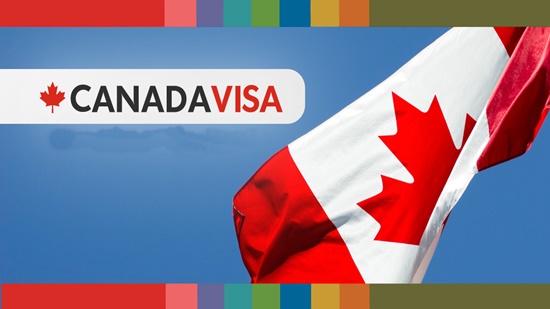Office Practice JAMB Past Questions And Answers (Objectives and Theory)
Section A: Multiple Choice Questions
What is the primary objective of office practice?
a) To improve typing speed
b) To maintain office equipment
c) To enhance office efficiency
d) To decorate the office space
Answer: c) To enhance office efficiency
Which of the following is NOT a common office communication tool?
a) Email
b) Telephone
c) Fax machine
d) Typewriter
Answer: d) Typewriter
What is the purpose of office filing systems?
a) To store office supplies
b) To organize and manage documents
c) To clean the office space
d) To schedule office meetings
Answer: b) To organize and manage documents
What does the term “time management” refer to in office practice?
a) Managing office supplies
b) Managing office finances
c) Managing office equipment
d) Managing tasks and deadlines
Answer: d) Managing tasks and deadlines
Which of the following is NOT a component of effective office communication?
a) Clarity
b) Brevity
c) Complexity
d) Courtesy
Answer: c) Complexity
What is the purpose of office etiquette?
a) To promote a positive work environment
b) To discourage teamwork
c) To increase office expenses
d) To limit employee benefits
Answer: a) To promote a positive work environment
Which of the following is NOT a common office software application?
a) Microsoft Word
b) Adobe Photoshop
c) Microsoft Excel
d) Microsoft PowerPoint
Answer: b) Adobe Photoshop
What is the purpose of office memos?
a) To communicate with external stakeholders
b) To announce office policies and procedures
c) To schedule office meetings
d) To promote office products
Answer: b) To announce office policies and procedures
What does the term “telecommuting” refer to in office practice?
a) Working from home or remote locations
b) Working overtime in the office
c) Working on weekends in the office
d) Working on public holidays in the office
Answer: a) Working from home or remote locations
What is the purpose of office ergonomics?
a) To design comfortable and efficient workspaces
b) To increase office expenses
c) To decrease office productivity
d) To promote office politics
Answer: a) To design comfortable and efficient workspaces
Section B: Theory Questions
Define office practice and discuss its importance in modern workplaces.
Answer: Office practice refers to the set of procedures, protocols, and activities carried out in an office environment to ensure smooth operations, effective communication, and efficient workflow. It encompasses various aspects such as office organization, time management, communication skills, office technology, and workplace etiquette. Office practice is important in modern workplaces as it helps optimize productivity, streamline processes, foster collaboration, maintain professionalism, and enhance employee satisfaction. By establishing standard practices and protocols, offices can create a conducive work environment conducive to achieving organizational goals.
Explain the concept of office communication and its significance in business operations.
Answer: Office communication refers to the exchange of information, ideas, and messages among individuals within an office environment. It includes verbal, written, and electronic communication channels such as face-to-face conversations, memos, emails, phone calls, and video conferences. Effective office communication is essential for coordinating tasks, sharing knowledge, making decisions, resolving conflicts, and building relationships. It facilitates collaboration, teamwork, and innovation, enhances productivity and efficiency, and ensures that organizational objectives are met.
Describe the purpose and benefits of office filing systems.
*Answer: Office filing systems are designed to organize, store, and manage documents and records in a systematic and accessible manner. The purpose of office filing systems is to ensure that documents are properly organized, secured, and retrievable when needed. Benefits of office filing systems include:
Improved organization and efficiency: Documents are categorized and stored systematically, making it easier to locate and retrieve them.
Reduced clutter: Filing systems help eliminate clutter and maintain a tidy workspace.
Enhanced productivity: Easy access to documents saves time and minimizes disruptions in workflow.
Compliance and legal requirements: Proper document management ensures compliance with regulatory and legal requirements.
Preservation of information: Filing systems help protect documents from damage, loss, or unauthorized access.*
Discuss the importance of office etiquette and professional conduct in the workplace.
Answer: Office etiquette refers to the set of social and professional norms, behaviors, and manners observed in the workplace. It encompasses aspects such as respect, courtesy, punctuality, confidentiality, and dress code. Office etiquette is important in the workplace as it promotes a positive work environment, fosters mutual respect and cooperation among colleagues, enhances communication and collaboration, and contributes to overall morale and productivity. Professional conduct involves adhering to ethical standards, fulfilling job responsibilities, and representing the organization in a positive light. It builds trust and credibility with clients, customers, and stakeholders and contributes to the long-term success and reputation of the organization.
Explain the concept of time management in office practice and discuss strategies for effective time management.
*Answer: Time management in office practice involves prioritizing tasks, allocating time efficiently, and maximizing productivity to achieve organizational goals. Effective time management allows individuals to accomplish more in less time, reduce stress, and maintain a healthy work-life balance. Strategies for effective time management include:
Prioritize tasks: Identify urgent and important tasks and allocate time accordingly.
Set goals: Establish clear, achievable goals and deadlines to guide your work.
Plan and schedule: Use calendars, planners, or digital tools to plan and schedule tasks and activities.
Minimize distractions: Limit interruptions, set boundaries, and create a conducive work environment.
Delegate responsibilities: Delegate tasks to others when appropriate to lighten your workload.
Take breaks: Schedule regular breaks to rest and recharge, which can improve focus and productivity.
Review and adjust: Regularly review your progress, adjust your plans as needed, and learn from your experiences to improve efficiency over time.




